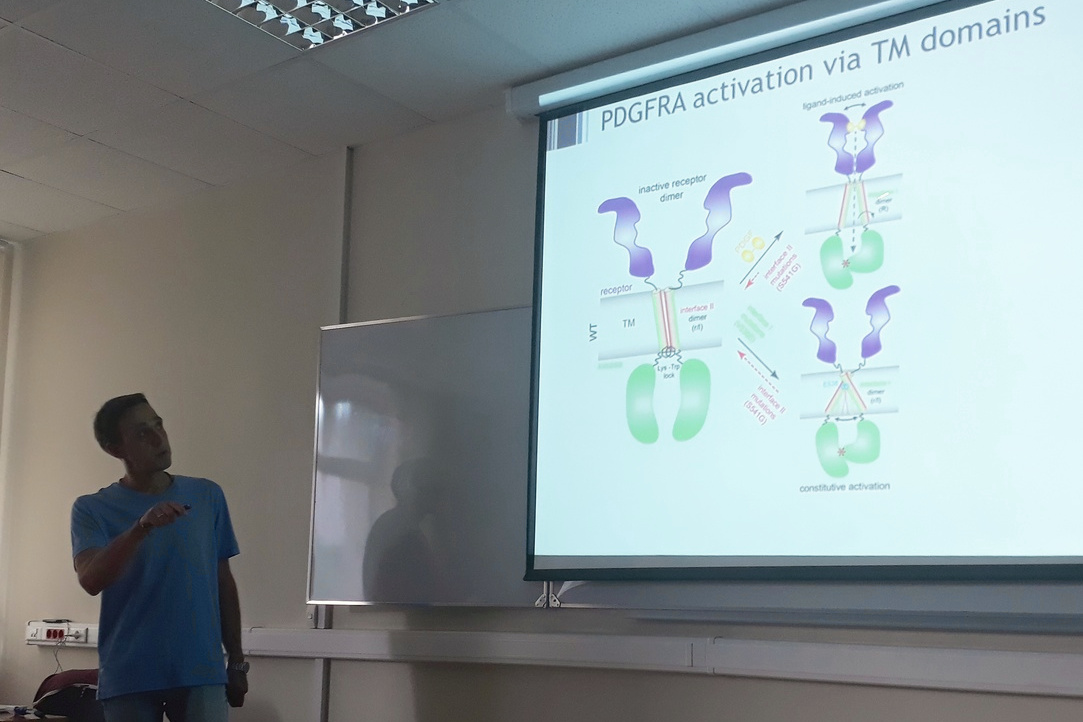Sharing the Road to Аdventure
Research Fellow Grossi Joas Santiago shares his thoughts on work experience with other colleagues:

Scientists Model Turbulence at Atomic Level
Scientists at HSE University and MIPT have developed a supercomputer-based method to model fluid flows at atomistic scales making it possible to describe the emergence of turbulence. The researchers used the supercomputers cHARISMa and Desmos to compute the flow of a fluid consisting of several hundred million atoms. This method is already being used to simulate the flow of liquid-metal lead coolant in a nuclear reactor. The paper has been published in The International Journal of High Performance Computing Applications.

Open-Source GPU Technology for Supercomputers: Researchers Navigate Advantages and Disadvantages
Researchers from the HSE International Laboratory for Supercomputer Atomistic Modelling and Multi-scale Analysis, JIHT RAS and MIPT have compared the performance of popular molecular modelling programs on GPU accelerators produced by AMD and Nvidia. In apaper published by the International Journal of High Performance Computing Applications, the scholars ported LAMMPS on the new open-source GPU technology, AMD HIP, for the first time.
PPAM Best Paper Award
The International Conference on Parallel Processing and Applied Mathematics (PPAM) Best Paper Award is given in recognition of the research paper quality, originality and significance of the work in high performance computing.
Workshop "Atomistic modelling of soft matter and nanostructures"
On Friday, June 28, workshop "Atomistic modelling of soft matter and nanostructures" was held. Professor Nikolay Piezjev gave a talk "Molecular origin of surface tension at liquid-vapor interfaces".
Workshop "Supercomputer technologies and atomistic modeling"
The regular workshop organized by the International Laboratory for Supercomputer Atomistic Modelling and Multi-scale Analysis presented reports on the modern development of supercomputer technologies, on the HSE supercomputer, and on the results of solving various real problems using atomic modeling.

Second School-seminar "Supercomputers in scientific research: the horizons of multiscale modeling and effective supercomputer co-design"
As part of the promotion of modern supercomputer technologies for the needs of scientific research, SAMMA laboratory organized the second school-seminar "Supercomputers in scientific research: the horizons of multi-scale modeling and effective supercomputer co-design". This event brings together developers of advanced supercomputer technologies and scientists who use high-performance computing in their research. The first day was devoted to the analysis of new technical solutions for high-performance computing, and the second to applications of supercomputer modeling, molecular dynamics simulations in the real problems of materials science and molecular biology.
Laboratory staff members presented the talks at the National Supercomputer Forum (NSCF-2018)
Mikhail Khalilov, Alexander Semenov and Vladimir Stegailov made presentations at the National Supercomputer Forum (NSCF-2018), which was held November 27-30, 2018 in the Aylamazyan Program Systems Institute of RAS, Pereslavl-Zalessky.
International conference "Biomembranes 2018"
International Conference "Biomembranes 2018" was held in October at MIPT. Laboratory fellows Roman Efremov and Anton Chugunov present lectures and Andrey Kuznetsov took part in poster session.

Lecture on Atomistic Mechanism of the Constitutive Activation of PDGFRA Via Its Transmembrane Domain
On Tuesday, May 15, seminar "Supercomputer and Multiscale Modelling of Condensed Phase and Biological Systems" was held. A. Polyansky from IBCh RAS gave a talk "Atomistic mechanism of the constitutive activation of PDGFRA via its transmembrane domain". The result of this study was the molecular model of PDGFRa receptor activation, and the role of its oncogenic mutant form have been revealed. On the second part of the seminar students of SAMMA Laboratory reported on their projects.
